 90378 28292
90378 28292
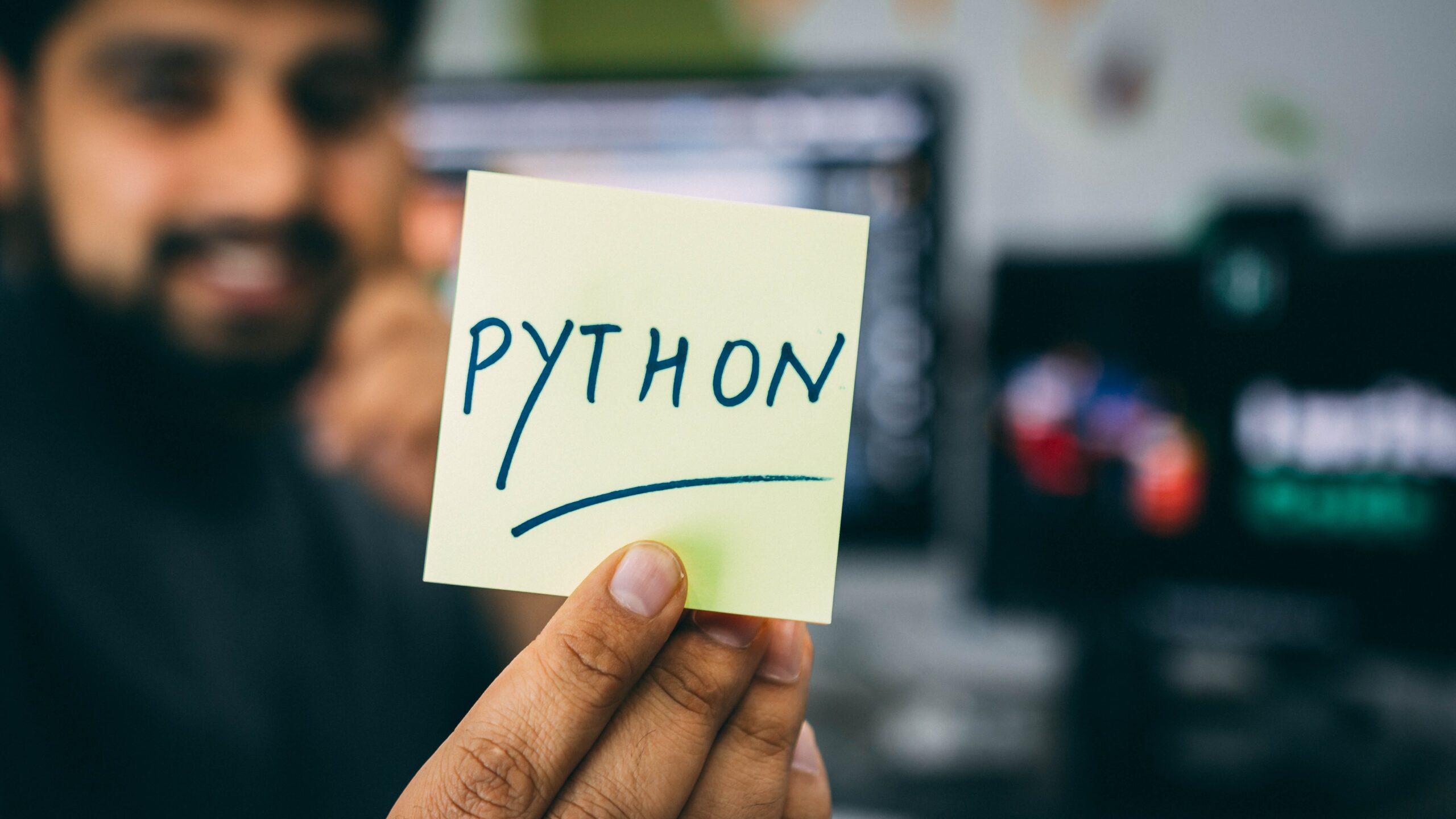
Python is an interpreted, object-oriented high-level, dynamically semantic programming language. Its high-level built-in data structures, combined with dynamic binding and dynamic typing, make it ideal for Rapid Application Development and as a scripting or glue language for connecting existing components. Python’s simple, easy-to-learn syntax emphasizes readability and reduces the software maintenance costs. Modules and packages which facilitate software modularity and code reuse are supported by this programming language. The Python interpreter and its comprehensive standard library are free to download and distribute in its source or binary form for all major platforms.
- Is interactive in the sense that you can sit at a Python prompt and write your program by interacting directly with the interpreter.
- Is Object-Oriented as it supports an Object-Oriented programming style or technique in which code is contained inside objects.
- Agreat language for beginners because it allows you to create a wide variety of applications, from basic text processing to web browsers and games.
History of Python
In the late 1980s, Guido van Rossum developed this programming language. There is a reason why the name Python was chosen. Guido van Rossum was reading the published scripts for “Monty Python’s Flying Circus,” a famous BBC comedy series from the 1970s. Van Rossum wanted a name that was different, unique, and a little mysterious and thus he decided upon the name “Python”.
Python is derived from ABC, Modula-3, C, C++, Algol-68, SmallTalk, and Unix shell, and other scripting languages. Python is copyrighted. Like Perl, Python source code is available under the GNU General Public License (GPL).
Why is Python so popular?
1) First-choice Language
Python is the programming language of choice for many programmers and students, owing to its high demand in the development industry. Students and developers always look forward to learning a language that is in high demand. Python is undoubtedly the hottest cake in the market right now. The programming language is used by many programmers and data science students for their development projects. One of the most important sections of data science certification courses is learning this language. In this way, the Python programming language can provide students with a plethora of exciting career choices.
2) Versatility, Efficiency, Reliability, and Speed
The Python programming language is more powerful, dependable, and faster than most modern languages. Due to its flexibility, it can be used in a wide range of environments, including mobile apps, desktop apps, web creation, hardware programming, and so on. Its versatility and high number of applications makes it more attractive to use.
3) Mature and Supportive Python Community
This programming language was developed more than 30 years ago, which is a long time for any programming language culture to evolve and expand to the point that it can help developers at all levels, from novice to expert. There is a range of documentation, guides, and video tutorials available for the language that learners and developers of all skill levels and ages can use to improve their knowledge of the language.
4) Big data, Machine Learning and Cloud Computing
Cloud computing, machine learning, and big data are three of the most common computer science trends right now, and they’re helping a lot of companies change and develop their processes and workflows.
Python is the most widely used programming language for data science and analytics. Many of the organization’s data processing workloads are solely based on the this programming language. Because of its many uses, including the ease of analyzing and organizing functional data, the language is used for the majority of research and development.
5) Support from Renowned Corporate Sponsors
When a company sponsors a programming language, it grows faster. For example, Facebook supports PHP, Oracle and Sun support Java, and Microsoft supports Visual Basic and C#. Facebook, Amazon Web Services, and, most notably, Google all support the Python programming language.
Google adopted the programming language in 2006 and has since used it in a number of applications and platforms. Google has invested a lot of time and resources in the training and success of the programming language. They’ve also built a separate python-only portal. In the developer community, the list of support resources and documentation for the language continues to expand.
Python Features
- Databases − Interfaces to all major commercial databases can be provided by Python.
- GUI Programming − supports GUI applications that can be created and ported to many system libraries, calls and windows systems, such as Windows MFC, Mac, and the X Window system of Unix.
- Scalable − provides a better structure and support for large programs than shell scripting.
- supports functional and structured programming methods as well as OOP.
- Easy-to-maintain − source code is easy-to-maintain.
- A broad standard library − Python’s bulk of the library is very portable and cross-platform compatible on UNIX, Mac, and Windows
- Interactive Mode − Python has support for an interactive mode that allows interactive testing and debugging of snippets of code.
- Portable − can run on a wide variety of hardware platforms and has the same interface on all platforms.
- Extendable − You can add low-level modules to the Python interpreter. These modules enable programmers to add to or customize their tools to be more efficient.
- provides very high-level dynamic data types and supports dynamic type checking.
- supports automatic garbage collection.
- can be easily integrated with C, C++, COM, ActiveX, CORBA, and Java.
Python is an object-oriented programming language that is important for programmers to understand. It’s also regarded as an interpreted high-level language that aids programmers in writing logical code for both small and large projects.
Python includes tools and libraries that support automated software testing methods for the system. Books are the best way to learn, especially when you want to get extensive knowledge of any particular area or subject.
1. Python Crash Course, 2nd Edition: A Hands-On, Project-Based Introduction to Programming
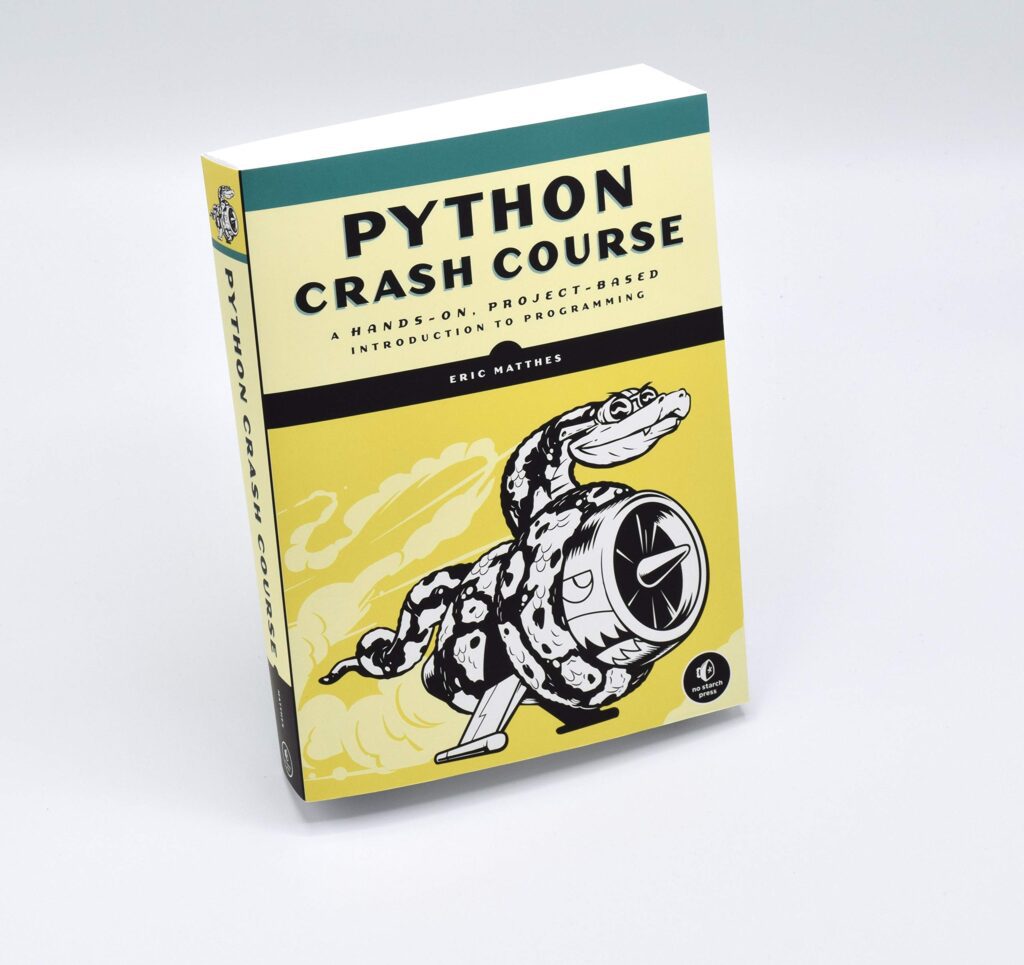
‘Python Crash Course’ by Eric Matthews is a detailed and fast-paced introduction to the Python programming language for beginners who want to learn Python programming and write practical programs. The aim of the book is to get you up to speed quickly and have you writing real programs in no time. This book is also for programmers who have a basic understanding of Python and want to brush up on their skills before getting their hands dirty with it. You’ll learn how to use libraries and resources like Pygame, Matplotlib, Plotly, and Django to create interactive visualizations as you move through the book. You’re also familiar with the concept behind 2D games, which is to create and deploy web applications. Python Programmers recommend it as one of the best books to learn Python.
This book is divided into two parts. The first section of the book covers Python programming fundamentals, including dictionaries, lists, loops, and classes. You learn how to use a Python program and how to write clean, readable code as well as how to create interactive programs. The section concludes with instructions on how to test your code before using it in a project. The book’s second half takes a more realistic approach. It puts your skills to the test by presenting you with three separate projects.
2.Learn Python the Hard Way: A Very Simple Introduction to the Terrifyingly Beautiful World of Computers and Code (3rd Edition) by Zed A. Shaw
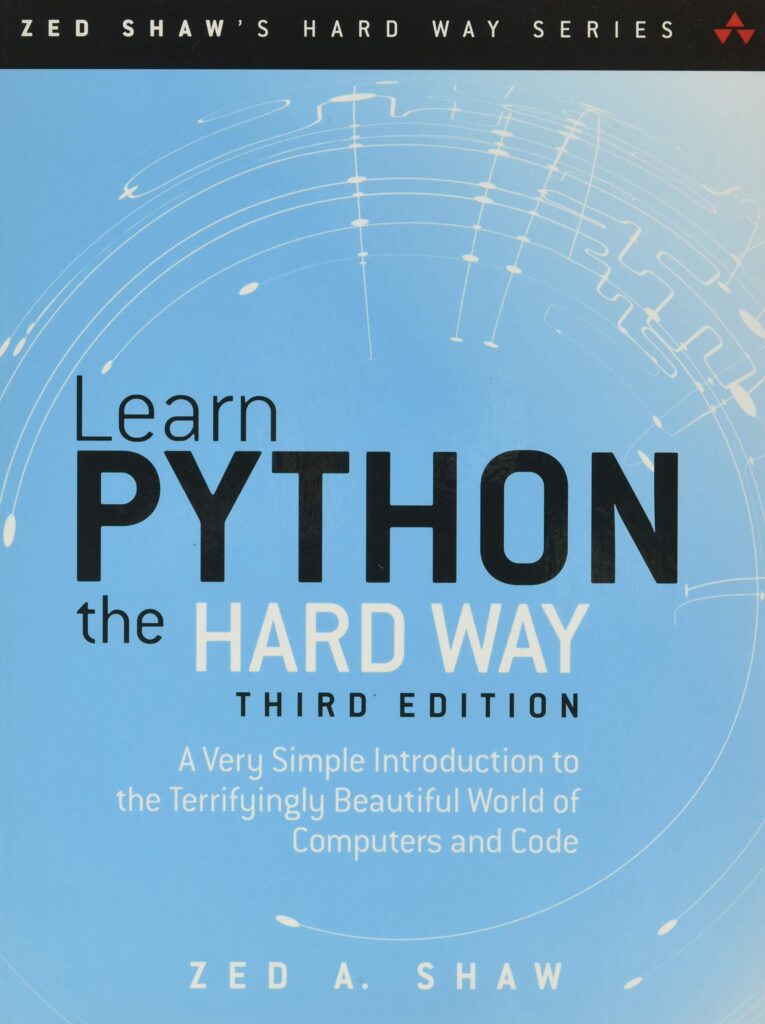
What Zed Shaw discovered about learning a programming language is the desire to be purposefully constructive and realistic in the learning process. He makes sure you type in every line of code, troubleshoots if something goes wrong, and before you know it, you’ve accumulated an arsenal of tools and skills that will help you become a fantastic programmer. You bring discipline, determination, and perseverance; the author takes care of the rest. You’ll master Python by working through 52 brilliantly crafted exercises in Learn Python the Hard Way, Third Edition.
3. Elements of Programming Interviews in Python: The Insiders’ Guide
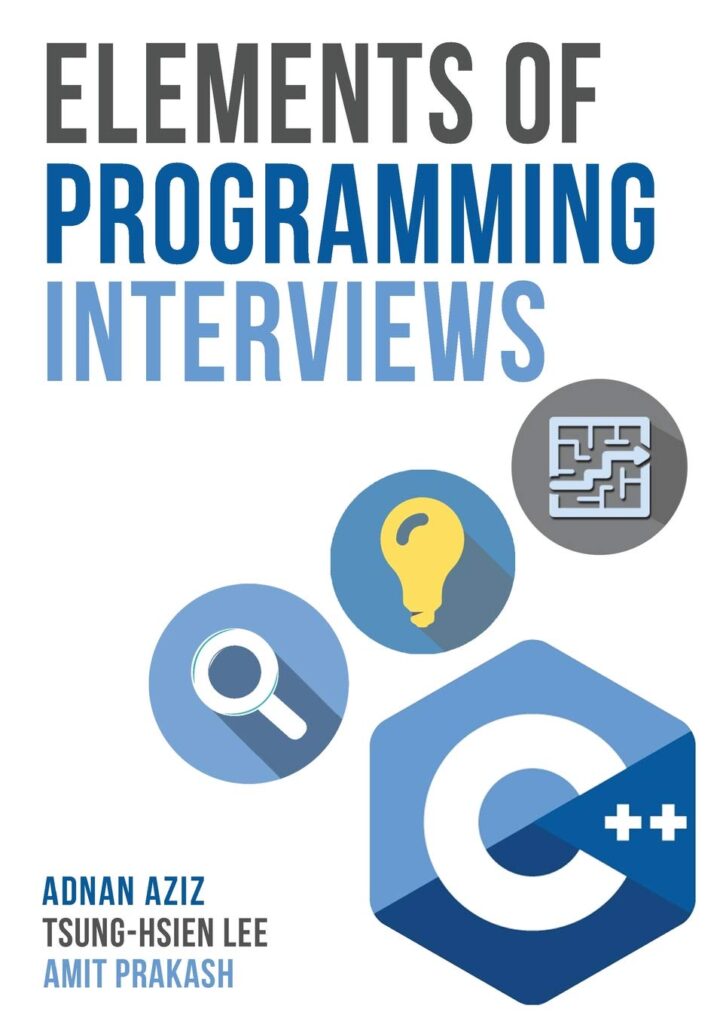
The book provides you with a series of 250 problems to bring your Python skills to the test. The issues are typical of interview questions posed at top tech firms. 200 numbers, 300 evaluated applications, and 150 additional variations are used to demonstrate the problems, which are then accompanied by comprehensive solutions. The book also includes a rundown of the non-technical aspects of interviewing, as well as advice on negotiating the best deal and using EPI effectively. To brush up on your skills, a description of data structures and algorithms is given.
The book is organized into chapters that cover both simple and advanced data structures. Each chapter begins with a brief introduction, followed by a case study, top tips, and a summary of the most important library practices, and finally, large and thought-provoking problems.
4. Automate the Boring Stuff with Python, 2nd Edition: Practical Programming for Total Beginners
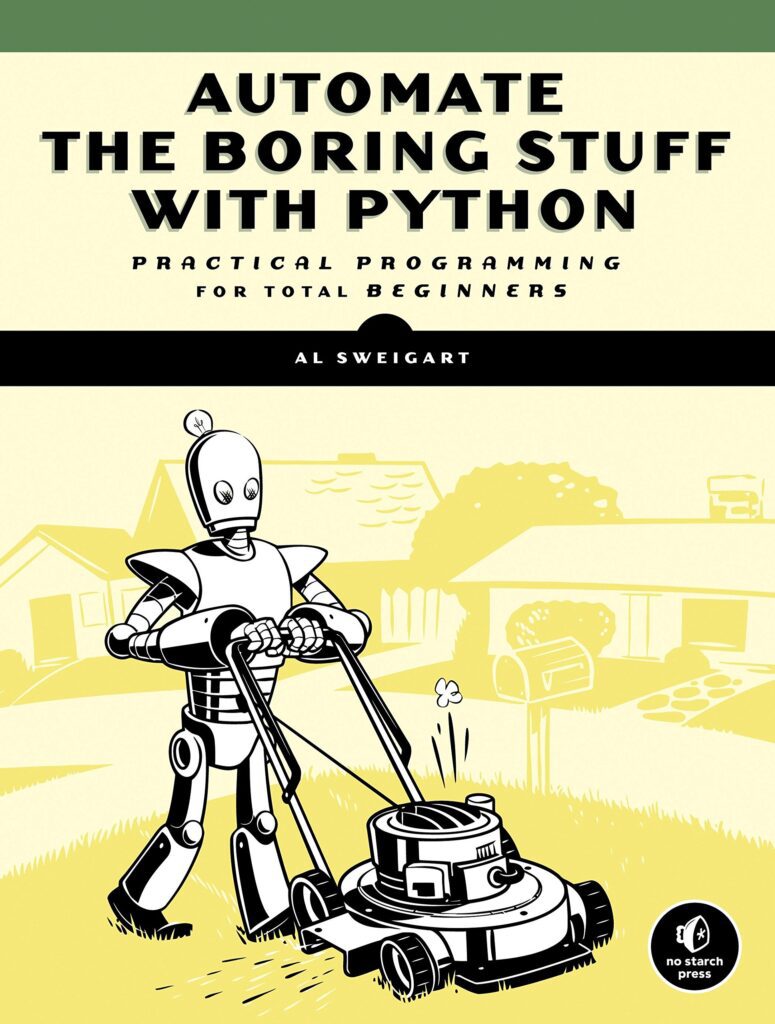
It is one of the best-selling Python books in the world, and it teaches Python 3 to anyone from technically inclined beginners to liberal arts majors to geeks. The books guide you through each program and include step-by-step instructions, helping you to write Python programs easily and efficiently. At the end of each chapter, the author, AI Sweigart, challenges his readers with revised practice projects.
You’ll learn the basics of Python and experiment with a number of library modules for web scraping, reading PDF and Word documents, and automating clicking and typing. It is one of the best-selling Python books in the world, and it teaches Python 3 to anyone from novices to liberal arts majors to geeks. The books take you step by step through each program and include step-by-step instructions to help you write Python programs quickly and easily. The author of the book, AI Sweigart, challenges his readers with updated practice projects at the end of each chapter.
5. A Byte of Python
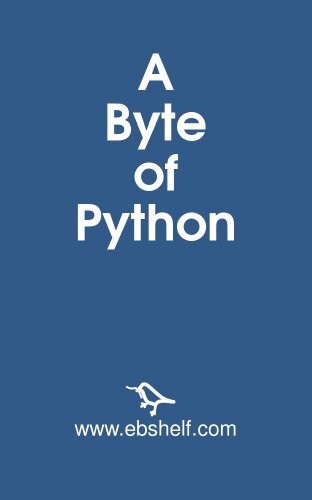
C.H. Swaroop’s free best book on Python programming, “A Byte of Python,” is designed to help beginners understand the Python language. While the book focuses on Python 3, it will also help you adapt to older versions of the language. Turkish, Swedish, French, Chinese, German, Spanish, Russian, Ukrainian, Portuguese, and Korean are among the 26 languages available for the novel. The translations were provided by active community members who worked tirelessly to keep the book’s edits running as it was updated. The book begins with an introduction to the subject. It also takes into account the readers’ aspirations in terms of dedication. The book then goes on to explain Python and how it has become one of the most popular programming languages. The book then goes on to Python concepts, which are described in detail with examples at each level. It ends with recommendations for how to continue learning Python after finishing this book, as well as a problem to solve, which puts your skills to the test even at the end.
6. Head-First Python (2nd edition)
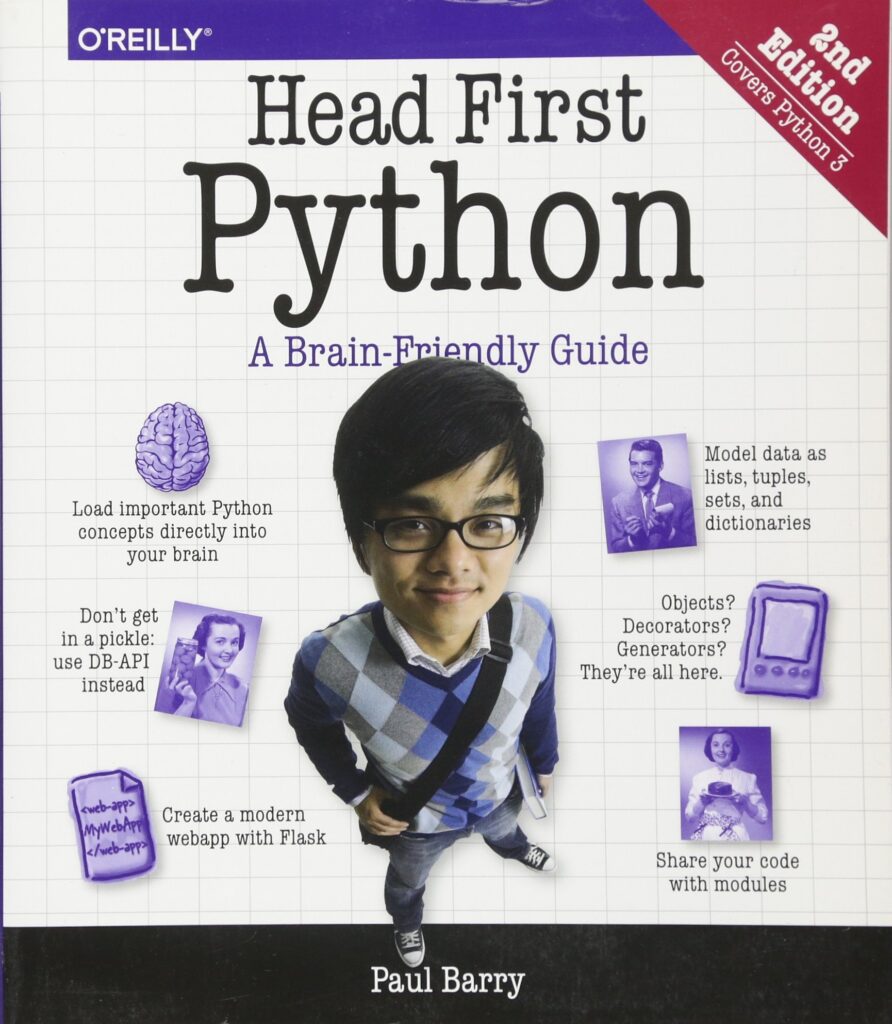
‘Head-First Python’ by Paul Barry is the best book to learn python. a fast and simple fix for you if you want to learn the fundamentals of Python programming without having to slog through unsuccessful tutorials and books. The book will help you understand the basics of Python programming and how to work with built-in functions and data structures quickly. The book then goes on to discuss how to create a web application, exception management, data wrangling, and other topics. This visually rich Python book is the perfect match for you if you are a visual learner who despises text-heavy books. It is based on the most up-to-date research in cognitive science and learning theory to help you understand Python’s fundamentals quickly and learn to create web apps in no time.
Paul Barry, a lecturer at Carlow Institute of Technology in Ireland, is the author. He worked in the IT industry for over a decade before entering academia. Programming the Network with Perl, Head First Programming, and Head First Python is only a couple of his well-known programming books.
7. Learning Python, 5th Edition
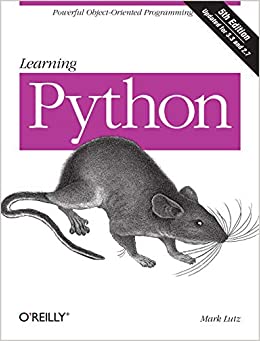
Based on his training course, the book’s author, Mark Lutz, offers a detailed, in-depth introduction to the core Python language. The most recent edition of the book helps you to write high-quality, effective code. This is also the best book to use if you want to study Python. This book is for anyone who wants to learn Python and succeed at it; it can be read and practiced by anyone, from beginners to experienced developers. You’ll learn about the main built-in object types in Python, including numbers, lists, and dictionaries. You’ll also hear about redundancy in code and how to arrange statements. By delving into courses, the book also introduces you to OOPs concepts in Python.
Finally, this book discusses general programming principles such as exception management and development tools. For experienced readers and programmers, the book also covers Python resources like decorators, descriptors, metaclasses, and Unicode encoding.
Books for Advanced Programmers
8. Introduction to Machine Learning with Python: A Guide for Data Scientists
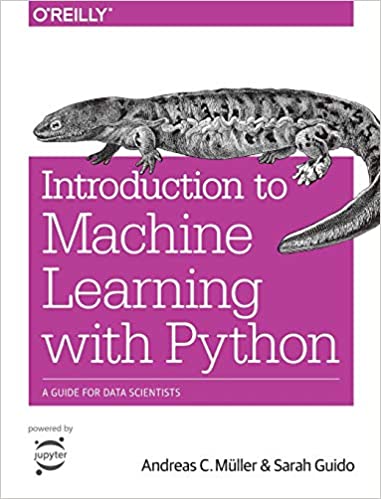
Machine learning has become an integral part of many commercial applications and projects, and the number of these applications has only increased over time. This book by Sarah Guido and Andreas C. Muller teaches you how to build machine learning solutions using the Python programming language. Machine learning systems are only limited by our imagination as the amount of data used grows by the second.
Throughout this book, you’ll learn how to use Python and the scikit-learn library to create a rich machine-learning program. Before moving on to the pros and cons of common machine learning algorithms, the book introduces you to the fundamental concepts and applications of machine learning. Advanced approaches for model assessment are also covered, as well as the idea of pipelines for encapsulating your workflow and chaining models. Finally, the book gives tips on how to improve your data science abilities.
9. Fluent Python: Clear, Concise, and Effective Programming
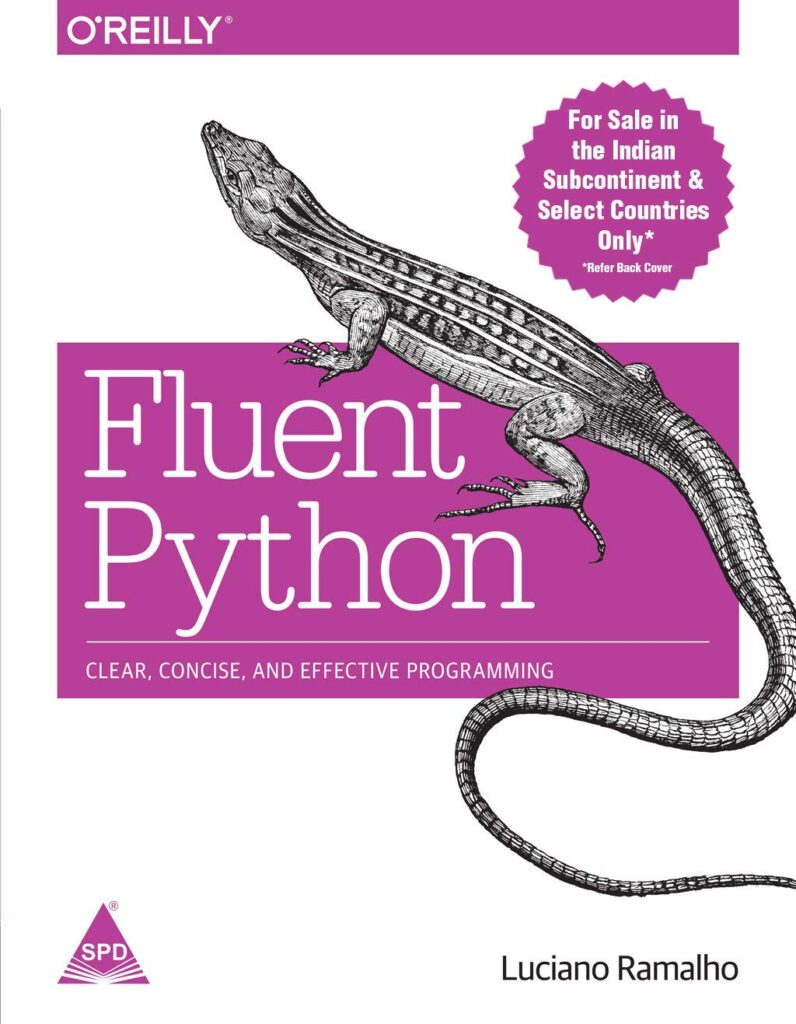
Luciano Ramalho’s ‘Fluent Python’ is a hands-on guide that shows you how to write useful Python code by using the language’s most underrated but best features. The author guides you through the language’s features and libraries, assisting you in making your code shorter, easier, and more readable.
The python data model, data structures, functions as artifacts, object-oriented idioms, control flow, and metaprogramming are among the topics covered in the book.
Advanced Python programmers can learn about Python 3 and how to become fluent in this version of the language with the help of this book. The author is Luciano Ramalho, a Web Developer who has used Python to work with some of Brazil’s most important news portals and runs his own Python training business.
10. Python Cookbook: Recipes for Mastering Python 3
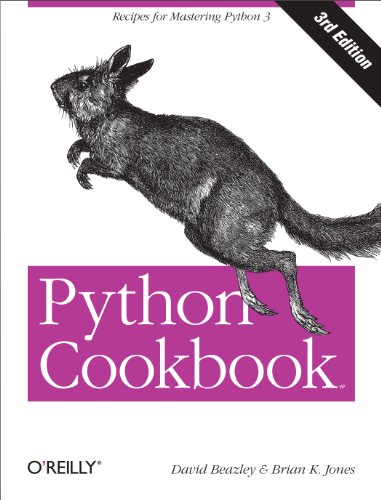
David Beazley and Brian K. Jones’ ‘Python Cookbook’ will help you learn Python 3 programming skills or upgrade older Python 2 code. This cookbook is jampacked with Python 3 recipes that have been tried and true. 3 is designed for advanced Python programmers who want to go beyond traditional coding and learn about modern technologies and idioms. The book includes complete recipes for a variety of subjects, including the Python language and its applications, as well as tasks that are popular across a wide range of application domains.
Strings, data structures, iterators, functions, classes, modules, packages, concurrency, checking, debugging, and exceptions are only a few of the topics discussed in the book. The above-mentioned recipes assume that you have the requisite information to understand the topics covered in the book. Each recipe includes a sample code that can be used in the reader’s own projects. The code is accompanied by a discussion of how the code works and why the solution works.
